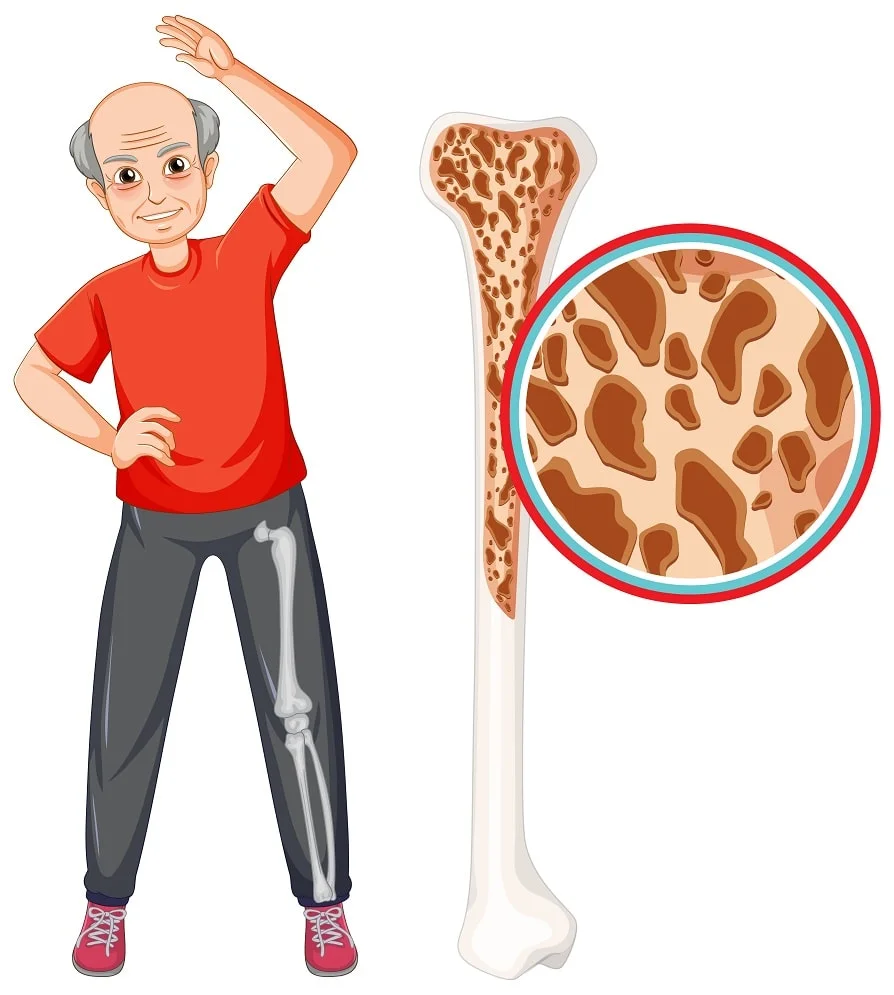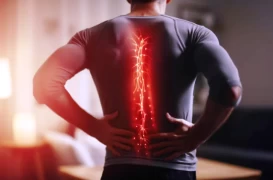
Osteoporosis in Men: A Hidden and Silent Threat
- Osteoporosis in Men: A Hidden and Silent Threat
- What is Osteoporosis?
- How Osteoporosis Differs in Men
- Genetic Factors
- Hormonal Disorders
- Risk Factors
- Diagnostic Methods
- Treatment Approach
- Prevention Strategies
- Conclusion
When osteoporosis is mentioned, most people think of elderly women. However, this disease can also seriously affect men. In my clinical practice, I often encounter many male patients who come in with a complaint of fractures and are unaware of their osteoporosis until it is diagnosed. Yet, osteoporosis in men is a frequently overlooked condition that can lead to serious health problems if diagnosed late.
What is Osteoporosis?
Osteoporosis is a systemic skeletal disease characterized by a decrease in bone mineral density, resulting in bones becoming brittle. Microscopically, there is weakness and porosity in the bone structure. As a result, even minor trauma can cause fractures. The hip, spine, and wrist are the most common sites for these fractures.
How Osteoporosis Differs in Men
While the decrease in estrogen after menopause accelerates bone loss in women, this process progresses more slowly and insidiously in men. The main reason for this is that androgen hormones remain active for a longer time in men. However, this does not mean men are safe. On the contrary, because diagnosis is often delayed, the consequences of fractures due to osteoporosis can be much more severe in men. For instance, the mortality rate within one year after a hip fracture is twice as high in men compared to women.
Genetic Factors
Genetic predisposition plays a significant role in the development of osteoporosis in men. If there is a family history of osteoporosis, especially a history of fractures in the father or another male relative, these individuals should have their bone density regularly checked. Genetic factors include certain mutations that affect bone mineral density and the expression levels of proteins involved in bone metabolism.
Additionally, ethnicity is another important variable. For example, Asian and Caucasian men have a higher risk of osteoporosis. In contrast, African-descended men are observed to have genetically higher bone density.
Hormonal Disorders
One of the most common causes of osteoporosis in men is hormonal imbalances. Testosterone deficiency (hypogonadism) is a key factor that accelerates bone resorption and slows bone formation. Particularly with aging, testosterone levels tend to decrease. This is defined as “age-related hypogonadism” and is a risk factor for osteoporosis.
Thyroid diseases, adrenal gland disorders (e.g., Cushing’s syndrome), and increased levels of parathyroid hormone (hyperparathyroidism) are other endocrinological problems that can accelerate bone loss.

Risk Factors
- Genetic predisposition
- Low testosterone levels
- Sedentary lifestyle
- Excessive alcohol and tobacco use
- Long-term corticosteroid use
- Chronic diseases (e.g., kidney, liver, or intestinal disorders)
- Inadequate calcium and vitamin D intake
Diagnostic Methods
In men, osteoporosis is diagnosed by measuring bone mineral density (BMD) using the DEXA (dual-energy X-ray absorptiometry) method. Screening is recommended for men over the age of 70. However, if risk factors are present, screening should begin earlier.
Blood tests should evaluate:
- Testosterone levels
- Calcium and phosphorus levels
- Vitamin D levels
- Thyroid and parathyroid hormones
Treatment Approach
Treatment begins with identifying the underlying causes. If testosterone deficiency is present, hormonal support may be necessary in cooperation with an endocrinologist. Treatment approaches include:
- Medical Treatment:
- Bisphosphonates: Inhibit bone resorption (e.g., alendronate).
- Denosumab: Preferred in patients with high fracture risk.
- Teriparatide: Effective in advanced osteoporosis due to its bone-forming properties.
- Testosterone replacement therapy: Should be considered in men diagnosed with hypogonadism.
- Exercise and Rehabilitation:
- Resistance and balance exercises support bone health and prevent falls.
- A comprehensive physical therapy program strengthens the musculoskeletal system, reducing fracture risk.
- Nutrition:
- Adequate daily calcium intake (1000–1200 mg) and vitamin D (800–1000 IU) are essential.
- Alcohol and caffeine consumption should be limited.
Prevention Strategies
- Regular physical activity
- Quitting smoking and alcohol use
- Getting adequate sunlight exposure
- Maintaining a healthy diet
- Enhancing safety at home and in the environment to reduce fall risk
Conclusion
Osteoporosis in men is often diagnosed late, but it can have severe consequences. Early screening and intervention are crucial, especially when individual risk factors such as genetic predisposition and hormonal imbalances are considered. As physical medicine and rehabilitation specialists, we should adopt a holistic approach to protect bone health and improve quality of life.
Let us remember: we cannot see our bones from the outside, but we feel their effects at every moment of life.

Dr. Elif Berber, Assistant Professor
Specialist in Physical Medicine and Rehabilitation





